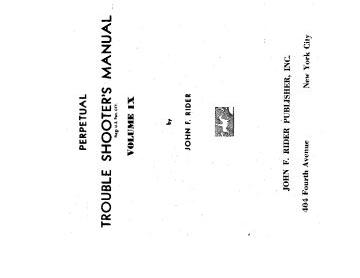Howard 260 Schematic purchase
Schematics
Search
Search
Valve
Data
Data
Transistor
Data
Data
Contact
Information
Information
Free
Radio Books
Radio Books
Privacy
Policy
Policy
| Howard 260 (Rider : Howard Radio 9 P: 10 13) |
| £1.80 (~ $2.20 or €2.10) |
| Not the correct model? go back to the search page to change |
|
Check your Email address is correct...
Check Spam folder if nothing received! Email me to advise of alternative address. |

| Country | Australia |
|---|---|
| Manufacturer | Howard Radio Pty. Ltd. Melbourne |
| Model | 784 Chassis = 784 - Howard Radio Pty. Ltd. |
| Year: 1938 | Broadcast Receiver |
| Valves | 9: 6K7 6A8 6K7 6Q7 6E5 6C5 6F6 6F6 5Z3 |
| Technology | Superhet with RF-stage; IF 460 kHz; 3 AF stages |
| Tuned Circuits | 9 AM circuit(s) |
| Wave Bands | Broadcast plus more than 2 Short Wave bands |
| Power Type | 200-260 Volts AC |
| Notes | Howard model "784" is an eight-valve receiver designed for broadcast and short-wave coverage and operation from 200-260 volt AC mains. This receiver is of the console type and is fitted with a 12 inch diameter, 800 ohms field, loudspeaker. five controls are fitted, these being for volume, tuning, sensitivity (continuous), tone (continuous), and wave-change (five positions - broadcast, 3 short-wave bands, and pick-up). The "control" features are completed by a 6E5 tuning indicator. In addition to the basic model "784" console, this chassis is fitted to two or three radio-gramophone cabinets. One of these is a straightforward manual record change job, another uses a somewhat more eleborate cabinet and an auditorium-type loudspeaker, while yet another incorporates an automatic record-changing system. However, the chassis itself remains the same in each case, so that the same circuit applies to each receiver. Inspection of the circuit diagram shows that this model is rather elaborate in more ways than one. The most noteworthy feature of this receiver is found in the short-wave tuning arrangement. Although three short-wave bands are provided, the total coverage of these is very little more than that of the usual single short-wave band. The object of this is to simplify short-wave tuning and it succeeds to a very marked degree. The extent of the "band-spreading" thus introduced may be gauged from the coverage of the three bands: - Band 1 - 16/20 metres; band 2 - 19/30 metres; and band 3 - 29/53 metres. From this it can be seen that the degree of "band-spreading" introduced is highest at the high-frequency end of the range covered - where tuning is normally most difficult. The "band-spreading" feature is introduced in this receiver by means of small pre-set trimmers which are wired in series with each short-wave coil and placed in series with the tuning gang sections. Note, however, that an extra switch bank for each circuit serves to connect the grid circuits direct to the coils, thus ensuring that maximum voltage is applied to the grids. The alignment procedure for this receiver is quite normal, but it must be remembered that the series trimmers are only for purpose of coverage adjustment - alignment proper being effected by means of the normal shunt trimmers. In addition to the above, attention should be paid to the capacity-coupled band-pass filter which procedes the R.F. stage on the broadcast band; the band-pass I.F. coupler which follows the mixer valve; and the elaborate audio channel. These are all quite straightforward, however, and providing careful attention is paid to the circuit diagram and operating voltages, no trouble should be experienced. |
| Source | Book: Rider Vol: 9 Page: 10&13 |
| Source | Book: Beitman Vol: 1939 Page: 59 |